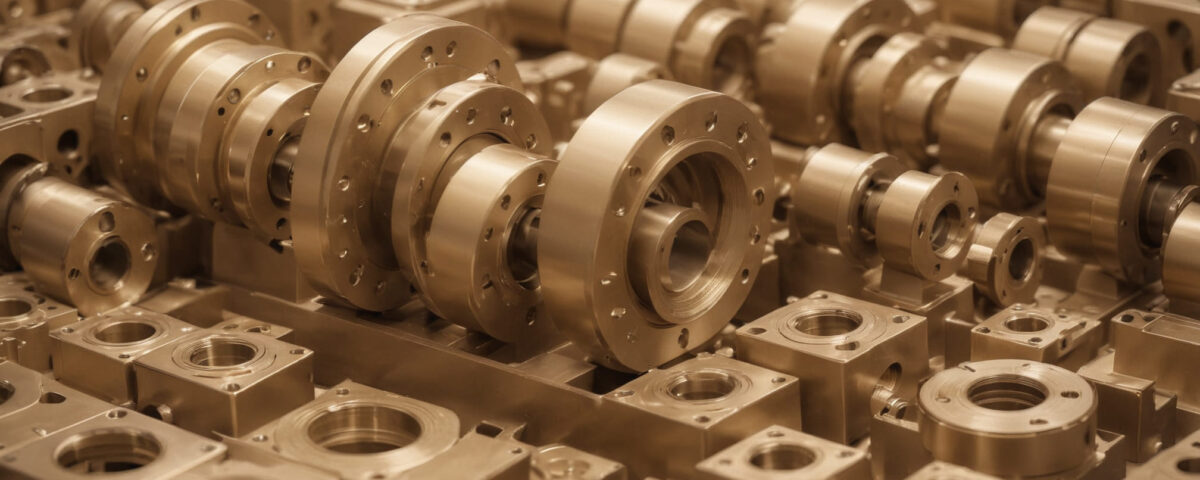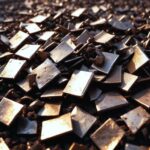
Controversy Arises Over Judging Machining Methods Based on Metal Chips and Debris
24 July 2024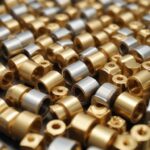
Brass CNC Machining vs. Other Metals: What Sets Brass Apart?
30 July 2024Introduction
The world of CNC manufacturing is fraught with challenges, from achieving precise tolerances to ensuring the durability of the final product. One of the most critical aspects often overlooked is surface finishing, which can dramatically impact the performance and longevity of CNC machined parts. Anodizing stands out as a pivotal surface treatment method, offering a myriad of benefits that enhance both functionality and aesthetics.
Surface finishing in CNC manufacturing is crucial for enhancing the durability, appearance, and performance of machined parts. Anodizing, in particular, is a key process that involves electrolytic passivation to increase corrosion resistance and wear properties while allowing for a wide range of aesthetic finishes.
Curious about how different anodizing processes can transform your CNC machined parts? Read on to discover the various types of anodizing and their unique benefits.
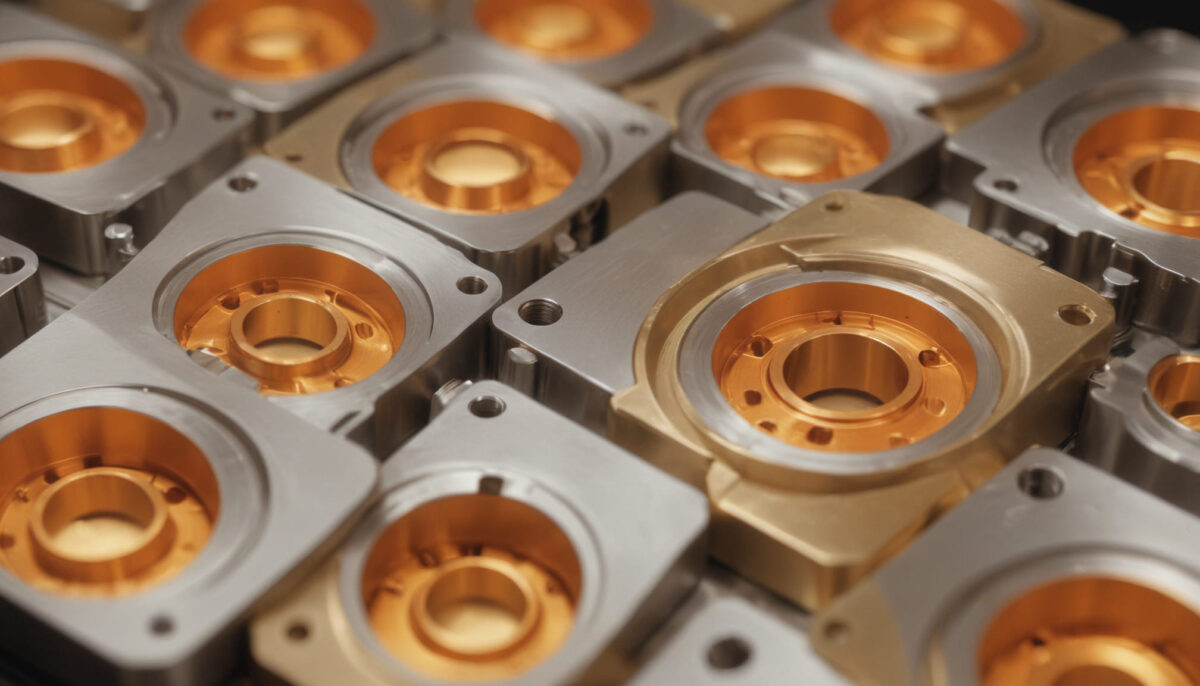
Types of Anodizing Processes
1. Type I: Chromic Acid Anodizing
Chromic acid anodizing, known as Type I anodizing, involves using chromic acid as the electrolyte. This process is less aggressive than sulfuric acid anodizing, making it ideal for delicate or thin-walled parts where preserving dimensional integrity is crucial.
Description of the Process
In chromic acid anodizing, the workpiece is submerged in a chromic acid solution and subjected to an electric current. The anodizing bath typically contains a chromic acid concentration of about 3-10% by weight. The process is carried out at a voltage of 30-60 volts and a temperature of around 90°F (32°C). This method creates a thin oxide layer, usually between 0.00002 to 0.0001 inches (0.5 to 2.5 microns) thick.
Applications in CNC Manufacturing
Type I anodizing is commonly used in the aerospace and defense industries due to its ability to provide excellent corrosion resistance without significantly altering the dimensions of the part. Typical applications include aircraft components, military hardware, and precision instruments.
Pros and Cons
Pros:
- Superior corrosion resistance.
- Minimal impact on dimensional integrity.
- Suitable for complex and thin-walled parts.
Cons:
- Higher cost compared to other anodizing types.
- Environmental concerns due to the use of chromic acid.
- Limited color options compared to sulfuric acid anodizing.
2. Type II: Sulfuric Acid Anodizing
Type II anodizing, or sulfuric acid anodizing, is the most widely used anodizing process due to its versatility and cost-effectiveness. It creates a thicker oxide layer than chromic acid anodizing, providing better wear resistance.
Detailed Explanation of the Process
During sulfuric acid anodizing, the metal part is immersed in a sulfuric acid bath with a concentration of around 15-20% by weight. The anodizing process is typically carried out at a voltage of 12-20 volts and a temperature range of 68-72°F (20-22°C). The resulting oxide layer is much thicker than that produced by chromic acid anodizing, typically ranging from 0.0001 to 0.001 inches (2.5 to 25 microns).
Common Uses in CNC Machining
This type of anodizing is commonly used in automotive, consumer electronics, and architectural applications, where both aesthetic appeal and functional performance are important. Examples include automotive trim, electronic enclosures, and architectural fittings.
Advantages and Disadvantages
Advantages:
- Versatile and widely used.
- Cost-effective.
- Allows for a variety of color finishes.
- Improved wear resistance compared to chromic acid anodizing.
Disadvantages:
- Thicker oxide layer may alter dimensions slightly.
- Less corrosion resistance compared to chromic acid anodizing.
- Requires more precise process control to avoid defects such as burning or pitting.
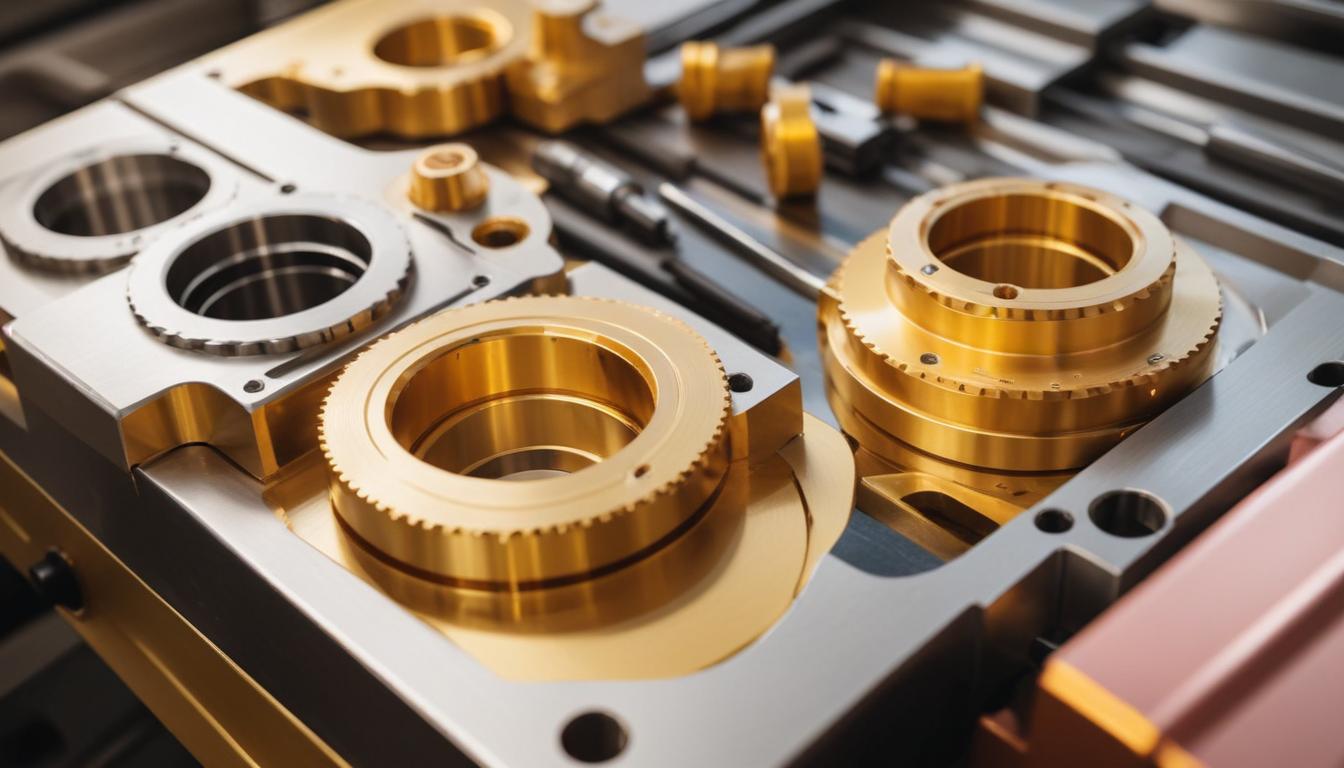
3. Type III: Hardcoat Anodizing (Sulfuric Acid Anodizing with Higher Voltage)
Type III, or hardcoat anodizing, is a more robust version of sulfuric acid anodizing. It is achieved by using higher voltages and lower temperatures, resulting in a thicker and harder oxide layer.
Overview of the Hardcoat Anodizing Process
Hardcoat anodizing involves immersing the part in a sulfuric acid solution and applying a high voltage, typically in the range of 60-100 volts. The process is carried out at a lower temperature, around 32-40°F (0-4°C). This results in an exceptionally thick oxide layer, often exceeding 0.002 inches (50 microns).
Specific Applications in CNC Manufacturing
Hardcoat anodizing is ideal for components that require high wear resistance and hardness, such as military equipment, hydraulic cylinders, and automotive parts. It's also used in industrial machinery and tools where durability is paramount.
Benefits Compared to Other Types of Anodizing
- Superior wear resistance: The thicker oxide layer provides excellent protection against abrasion and wear.
- Enhanced hardness and durability: Hardcoat anodized surfaces can achieve hardness levels up to 60 Rockwell C.
- Excellent for parts subjected to high friction and heavy usage: Ideal for applications where parts are exposed to harsh conditions and require long-lasting performance.
Other Variants and Specialized Anodizing Techniques
1. Anodizing of Different Metals (Aluminum, Titanium, Magnesium)
Different metals require unique anodizing processes due to their distinct properties. Here’s a closer look at anodizing for aluminum, titanium, and magnesium:
Aluminum Anodizing
Aluminum is the most commonly anodized metal due to its natural oxide layer that can be enhanced through anodizing. The process involves using an electrolyte solution, typically sulfuric acid, to create a thick and durable oxide layer.
- Advantages: Excellent corrosion resistance, enhanced aesthetic appeal, improved surface hardness.
- Applications: Consumer electronics, automotive parts, architectural components, aerospace structures.
Titanium Anodizing
Titanium anodizing involves the use of an electrolyte solution, often a blend of phosphoric and hydrofluoric acids, to create a thin oxide layer. The process can produce vibrant colors by varying the voltage.
- Advantages: Biocompatibility, vibrant color options, excellent corrosion resistance.
- Applications: Medical implants, aerospace fasteners, jewelry, high-performance sports equipment.
Magnesium Anodizing
Magnesium anodizing is more challenging due to the metal's reactivity. The process often involves using a fluoride-based electrolyte solution to create a protective oxide layer.
- Advantages: Lightweight, improved wear resistance, corrosion protection.
- Applications: Aerospace components, automotive parts, portable electronics, sporting goods.
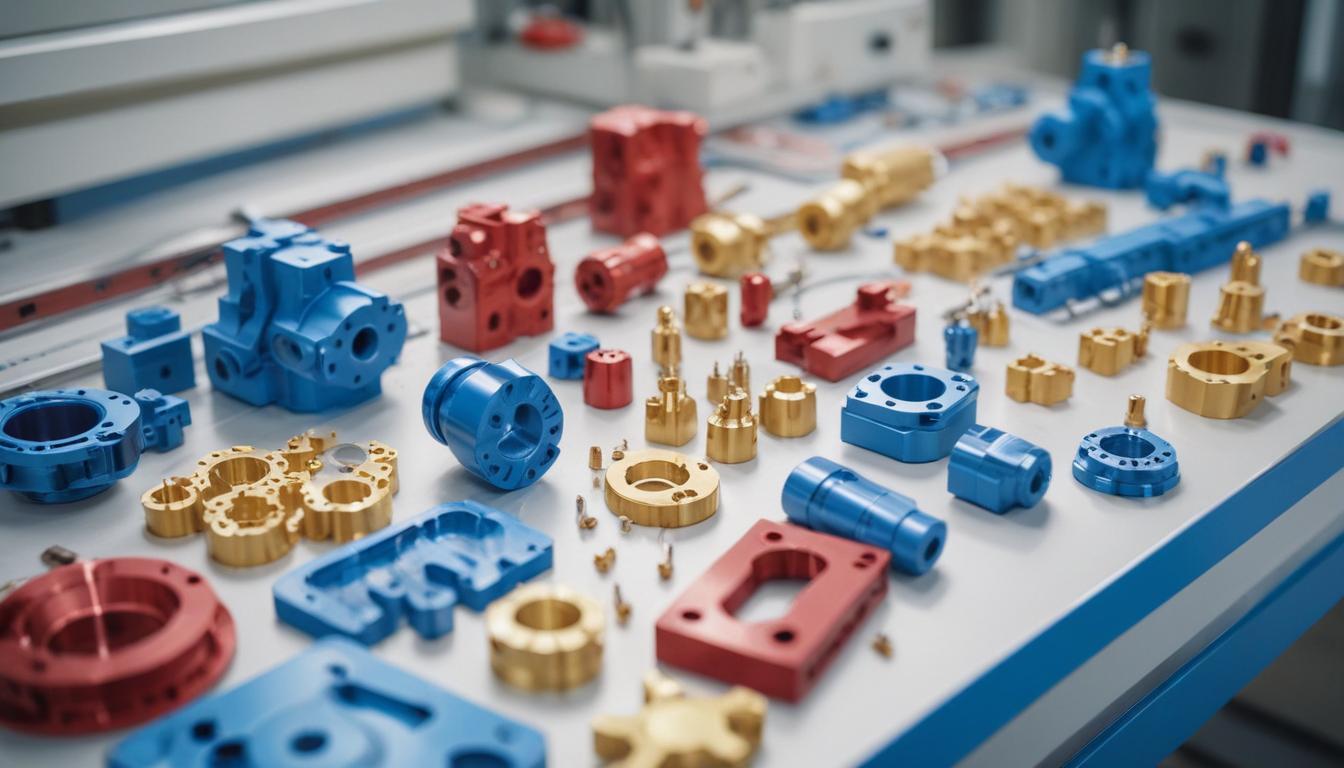
2. Anodizing for Aesthetic Purposes (Color Anodizing)
Color anodizing enhances the visual appeal of CNC machined parts without compromising on their functional properties.
How Color Anodizing Works
After the anodizing process, the porous oxide layer can absorb dyes, resulting in a wide range of colors. Sealing the oxide layer ensures the color is locked in and durable. The dyeing process involves immersing the anodized part in a dye bath, followed by sealing the dye within the oxide layer through a boiling water or steam sealing process.
Popular Color Options and Their Uses in CNC Manufacturing
- Black: Common in consumer electronics and automotive parts for a sleek and modern look.
- Red, Blue, Green: Frequently used in sporting goods, decorative items, and custom machinery components.
- Gold, Silver: Preferred for jewelry, high-end consumer products, and decorative hardware.
Techniques to Achieve Consistent Color
- Quality Control of anodizing parameters (time, temperature, voltage): Consistent process control ensures uniform color.
- Use of high-quality dyes: Ensures vibrant and long-lasting colors.
- Proper sealing of the oxide layer: Prevents color fading and enhances durability.
- Uniform pre-treatment and surface preparation: Critical for avoiding color variations and achieving a consistent finish.
3. Anodizing for Medical and Aerospace Industries
Anodized parts in medical and aerospace industries must meet stringent standards and requirements.
Requirements and Standards for Anodized Parts in These Industries
- Medical: Anodized parts must be biocompatible, resistant to sterilization processes, and highly corrosion-resistant. Compliance with standards such as ISO 13485 for medical devices is essential.
- Aerospace: Parts must meet stringent strength-to-weight ratios, wear resistance, and adhere to MIL-A-8625 standards for anodic coatings. They must withstand extreme environmental conditions and stresses.
Case Studies and Examples of CNC Machined Components
- Medical: Titanium dental implants and surgical instruments. Anodizing ensures these parts are biocompatible, resistant to wear and corrosion, and capable of withstanding repeated sterilization.
- Aerospace: Aluminum aircraft components and titanium fasteners. Anodizing provides the necessary durability, corrosion resistance, and adherence to strict industry standards, ensuring reliable performance in critical applications.
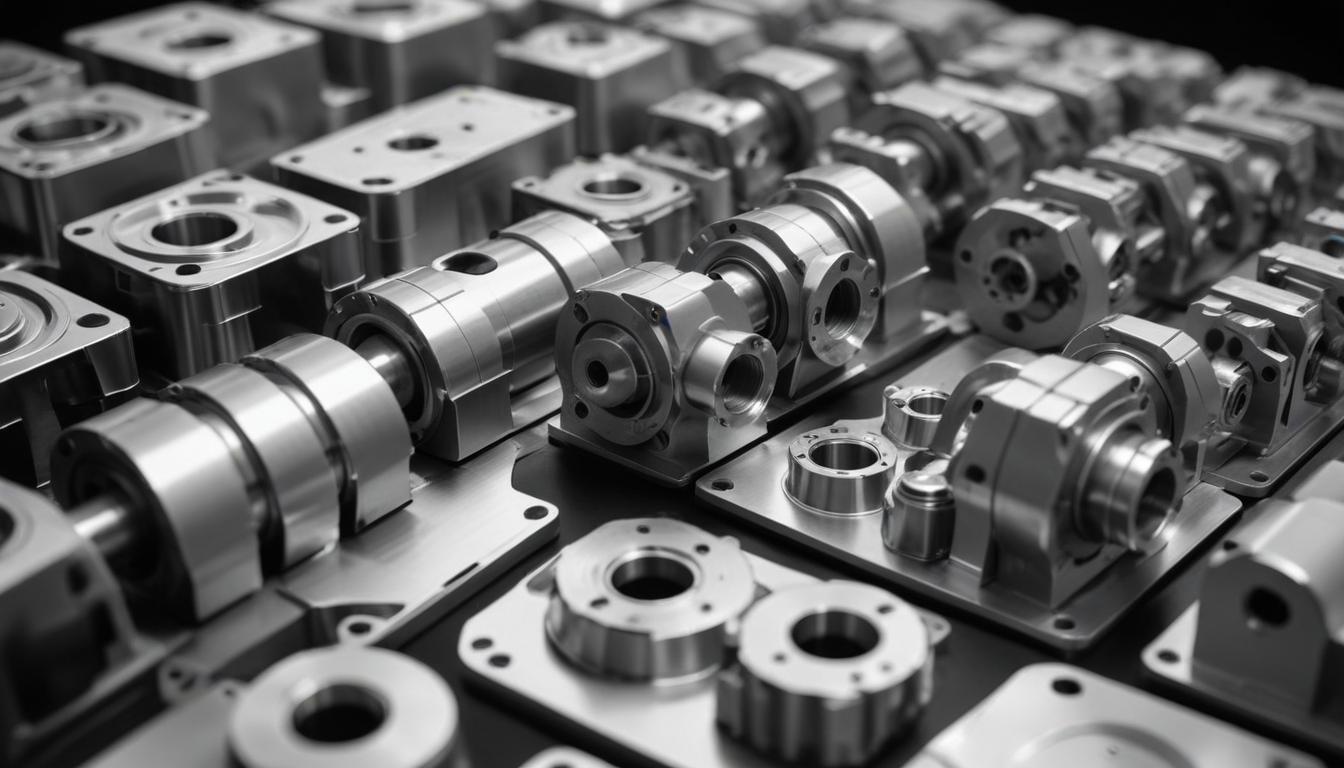
Challenges and Considerations
Anodizing CNC machined parts presents several challenges, including ensuring uniform coating, managing environmental impact, and maintaining high-quality standards.
Common Challenges in Anodizing CNC Machined Parts
Maintaining Consistent Oxide Layer Thickness
One of the primary challenges in anodizing is achieving a uniform oxide layer thickness. Variations can arise from inconsistencies in the anodizing bath, fluctuations in temperature or voltage, and differences in the alloy composition of the parts. Non-uniform thickness can lead to uneven wear resistance, aesthetic inconsistencies, and compromised performance.
Mitigation Strategies:
- Precise Process Control: Implementing automated systems to monitor and adjust anodizing parameters in real-time.
- Thorough Pre-Treatment: Ensuring the surface is uniformly cleaned and prepped before anodizing.
- Batch Consistency: Anodizing parts in consistent batches to minimize variability.
Avoiding Defects Such as Pitting and Burning
Pitting and burning are common defects that can occur during the anodizing process. Pitting is typically caused by impurities or contaminants in the anodizing bath, while burning can result from excessive current density or improper bath temperature.
Mitigation Strategies:
- Regular Bath Maintenance: Regularly filtering and replenishing the anodizing solution to remove contaminants.
- Controlled Current Density: Adjusting the current density to appropriate levels based on the part size and shape.
- Temperature Management: Maintaining the anodizing bath at optimal temperatures to prevent overheating and burning.
Ensuring Color Uniformity in Aesthetic Anodizing
Achieving consistent color quality in anodized parts is challenging due to factors such as alloy composition, dye absorption rates, and variations in the anodizing process.
Mitigation Strategies:
- Consistent Alloy Selection: Using alloys with known and consistent compositions for uniform dye absorption.
- Controlled Dyeing Process: Standardizing the dyeing process parameters, including time, temperature, and dye concentration.
- Quality Assurance: Implementing stringent quality control measures to inspect and verify color consistency across batches.
Environmental and Regulatory Considerations
Environmental Impact of Anodizing Processes
The anodizing process, particularly chromic acid anodizing, can have significant environmental impacts due to the use of hazardous chemicals and the generation of waste byproducts.
Environmental Mitigation Strategies:
- Alternative Anodizing Processes: Exploring environmentally friendly alternatives such as boric-sulfuric acid anodizing.
- Waste Treatment Systems: Implementing advanced waste treatment and recycling systems to minimize environmental impact.
- Regulatory Compliance: Ensuring compliance with environmental regulations and standards to mitigate the ecological footprint of anodizing operations.
Compliance with Safety and Regulatory Standards
Manufacturers must adhere to various safety and regulatory standards to ensure the safety of workers and the environment. This includes proper handling and disposal of hazardous materials, as well as maintaining a safe working environment.
Safety and Compliance Strategies:
- Employee Training: Providing comprehensive training on safe handling practices and emergency procedures.
- Safety Equipment: Equipping facilities with appropriate safety gear and equipment to handle hazardous materials.
- Regular Audits: Conducting regular safety and compliance audits to identify and address potential issues.
Techniques to Mitigate Challenges and Ensure Quality
Advanced Anodizing Equipment and Technology
Investing in advanced anodizing equipment and technology can significantly improve the quality and consistency of anodized parts. This includes automated anodizing systems, real-time monitoring tools, and advanced filtration systems.
Benefits:
- Improved Process Control: Advanced equipment allows for precise control over anodizing parameters, reducing variability.
- Enhanced Quality: Automated systems can consistently produce high-quality anodized parts with minimal defects. Increased
- Efficiency: Modern anodizing technology can streamline operations and increase production efficiency.
Adherence to Best Practices and Industry Standards
Following best practices and industry standards is essential for achieving high-quality anodized parts. This includes maintaining clean and well-maintained facilities, implementing rigorous quality control measures, and continuously improving processes.
Best Practices:
- Regular Maintenance: Keeping anodizing equipment and facilities in optimal condition through regular maintenance.
- Quality Control: Implementing comprehensive quality control measures to inspect and verify the quality of anodized parts.
- Continuous Improvement: Continuously evaluating and improving anodizing processes to enhance quality and efficiency.
Conclusion
Anodizing is a vital process in CNC manufacturing, providing enhanced durability, corrosion resistance, and aesthetic appeal to machined parts. With advancements in technology and techniques, the future of anodizing promises even greater innovations and applications.
Selecting the right anodizing method depends on the specific requirements of the part, including the desired properties and the intended application. Understanding the different types of anodizing processes and their unique benefits is crucial for making an informed decision.
By leveraging the right anodizing techniques, manufacturers can ensure their CNC machined parts meet the highest standards of quality and performance, ultimately leading to greater customer satisfaction and competitive advantage.

